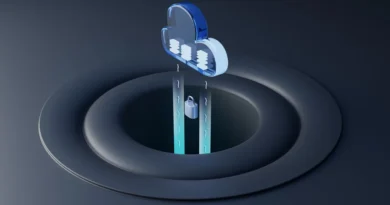Customer Retention: How to Identify the Right Approach?
Every stakeholder meeting stresses the need for acquisition to produce leads and revenue for any company. This is what most companies overlook while trying to figure out how to keep their customers happy. Everything about Customer retention is read in this post.
What is Customer Retention? does it mean to keep a customer engaged?
A company can retain its current and new customers for a predetermined period. Starbucks, as an illustration, offers several well-regarded reward programmes (which serve as a means of retaining customers).
If you urge your staff to split their efforts 50/50 between obtaining new clients and keeping the ones they already have, the lifetime value and royalties of the latter will go up.
Isn’t it interesting that 68 per cent of your sales originate from repeat customers?
Many of the clients you get may never return to your website after purchasing anything from you. It’s possible that you enticed them to your site by offering a discount on their first purchase. The real challenge, though, is to keep acquiring new clients and re-engaging them throughout the buying cycle.
Strategies for retaining consumers include time and effort on your part, as well as a sense of belonging among your target audience.
How can you become a brand that people remember when they think about items and services that you have to offer?
To maintain current and new customers, here are some tips for brands:
1) The Content is King
Great deeds deserve reciprocation. Customer demands should be taken into consideration while providing ideas, tips and tricks that are relevant to your product/services.
Be aware that if you meet their demands, they will contribute to your bottom line.
A brand’s commitment to its customers may be shown by the quality of its communications, especially when such communications are handwritten. A handwritten message from a company has a huge influence on the customer experience. If you go above and beyond what a consumer expects, here is an example of how you can. A competitive advantage is inevitable when your brand goes above and beyond the others to improve customer experience (CX).
If this is the case, clients are more likely to assist you to build your business by providing feedback.
2) Consistency and exceptionality are the keys to success
A variety of mediums are available for customers to interact with your business. Your relationship with them is shaped by their use of a variety of mediums and points of contact.
It’s not easy to maintain a high level of CX consistency. Continuous and flawless efforts are required. The ability to discuss and resolve client issues gets easier if you have a good understanding of the consumer profiles. To begin, find out how they prefer to consume media, what websites they visit, what they do, how much value they can add, and where their trip takes them. Messages, emails, alerts, and suggestions should then be sent out in this manner.
Also Read: Things to Consider When Planning Your App Development Budget
All of your brand’s channels must have a distinct voice and strive to create a frictionless, fluid experience for customers across all platforms and touchpoints. Messages from companies that are familiar with their customers are often well received. Make your conversations enjoyable by driving context, ensuring continuity, and preferring simplicity.
3) Be quick to answer questions posed to you
The first level of client connection has been answered by high-tech systems, but a human touch is still needed to complete the process. Self-service portals may be a great way to quickly answer consumers’ inquiries when you need to let them know there will be a delay in response or a change in operating hours. Customers who are dissatisfied with your product or service or who have experienced losses as a result of their purchase should not resort to self-service portals. Each specified question should be answered in less amount of time. You can create a list of queries for which the TAT has been pre-determined. CX (customer experience) improves dramatically when questions are answered quickly and correctly, which in turn increases revenue.
4) Operational processes should be automated
Every company has a considerable quantity of ordinary operating work that requires a significant amount of your time. Sending a thank-you email, a welcome email, and emails to those on your unsubscribe list are all examples of chores that should be automated. It is also possible to bill and pay using payment software. Doing everything by hand might take a long time. As a result of this, ensure that data integration and quality are maintained. Push notifications may also be used to keep in touch with clients who have abandoned you. You’ll be able to work on your approach, schedule mailers, and notify the event in a matter of seconds if you use this method.
5) Establish a procedure for handling customer complaints
For high-value consumers, you should be conscious of user discontent. They’re not just regular customers, they’re also evangelists for your company. As long as they’re doing it properly, let them do it. Users would be less likely to transfer brands if there was a system in place for handling complaints. To create trust, it is important to answer essential questions correctly. Make complaints a chance to learn more about your customers, find a solution to a problem they’ve been having and get a new customer.
6) Customer service KPIs should be in place
A marketing effort may not be as effective if you are unable to accurately measure the effects. Put in place the appropriate KPIs for tracking the organization’s progress toward its objectives. By establishing interim KPI targets, you can determine whether or not you are on the correct track.
KPIs to keep an eye on include:
- Response time – the amount of time it takes to answer a customer’s question
- Conversion rate – A customer’s response to a phone call or email is known as a “conversion.”
- Rate of unsubscribes – The number of people who have stopped using your service
- Actions per engagement – A user’s behaviour changes as a result of the number of times they interact with your brand.
- Customer lifetime value — the long-term value of a customer to your company
Your goal at the beginning of the process is to identify your target audience, build brand value, and conclude with a call to action.
Conclusion
Using the tactics outlined above will have a significant impact on your performance. This requires careful planning and implementation, as well as a continuing focus on refining current procedures. Maintain open lines of communication with your client. Rather than only having an acquisition plan, have a retention strategy in place at all times. Make your customers feel appreciated by rewarding them with discounts, freebies, and loyalty points.
Very few companies make an effort to cater to the specific needs of their existing customers, and we want you to be one of them. Know what they want, give them incentives to come back, provide them references, and be of true assistance to them.


